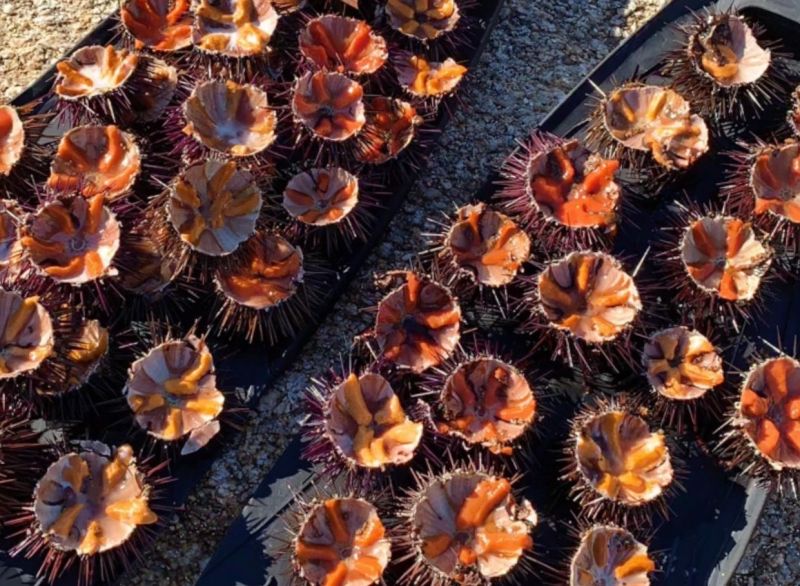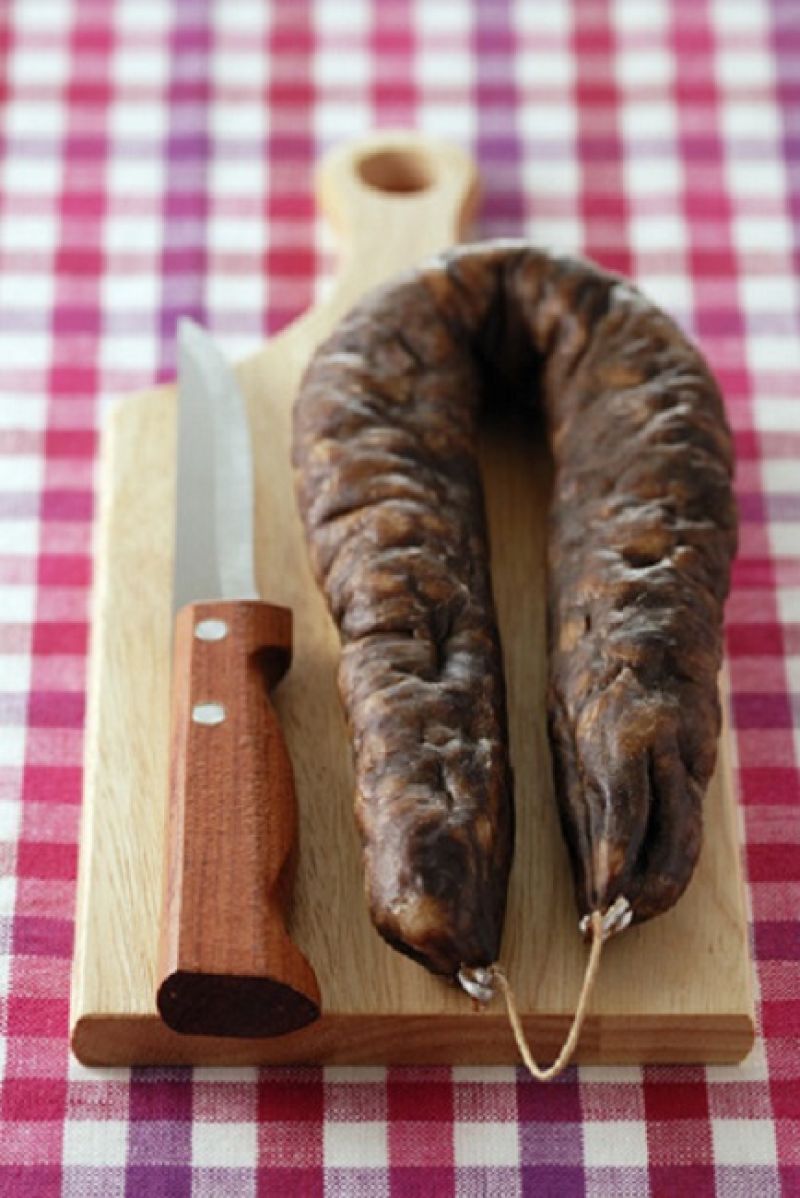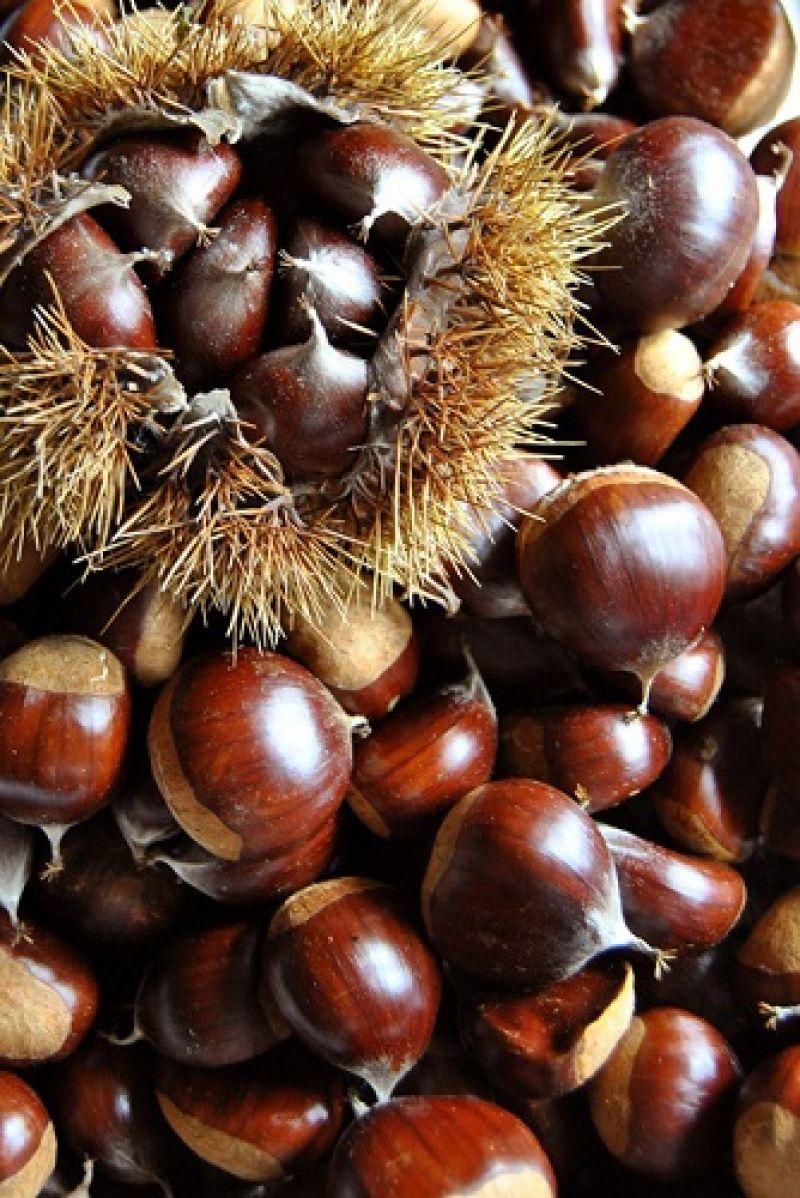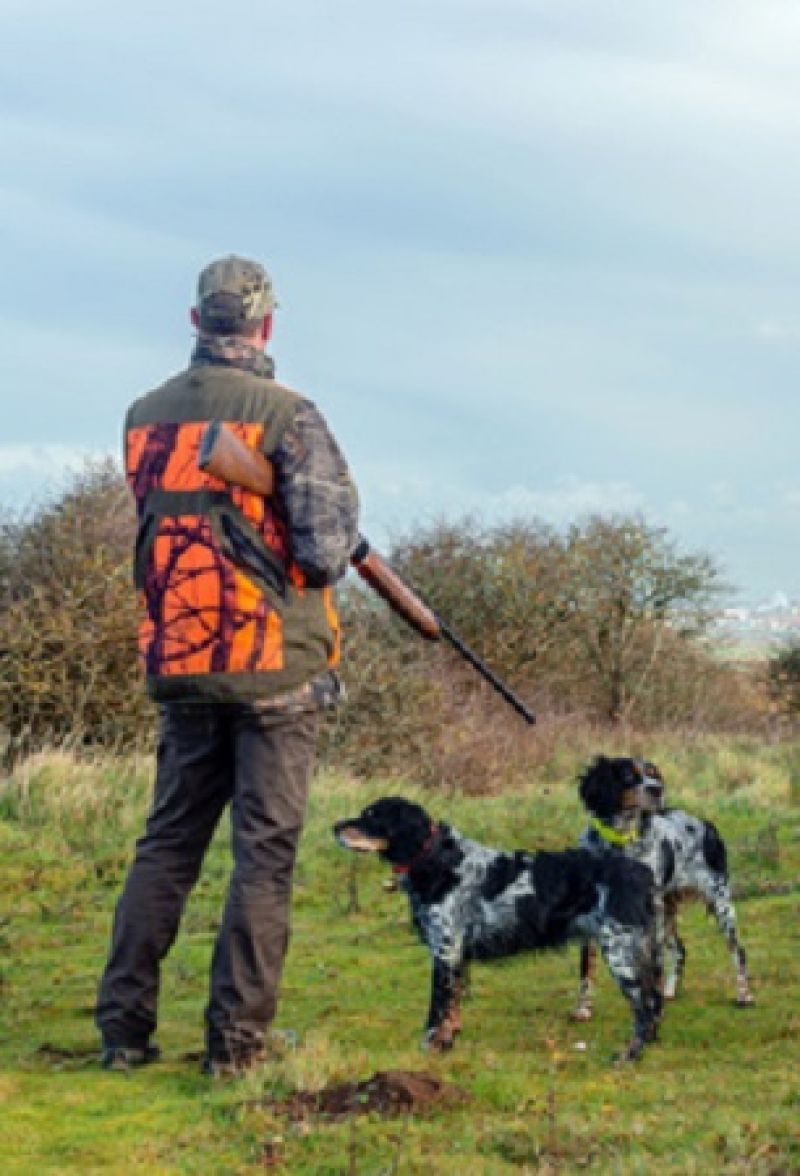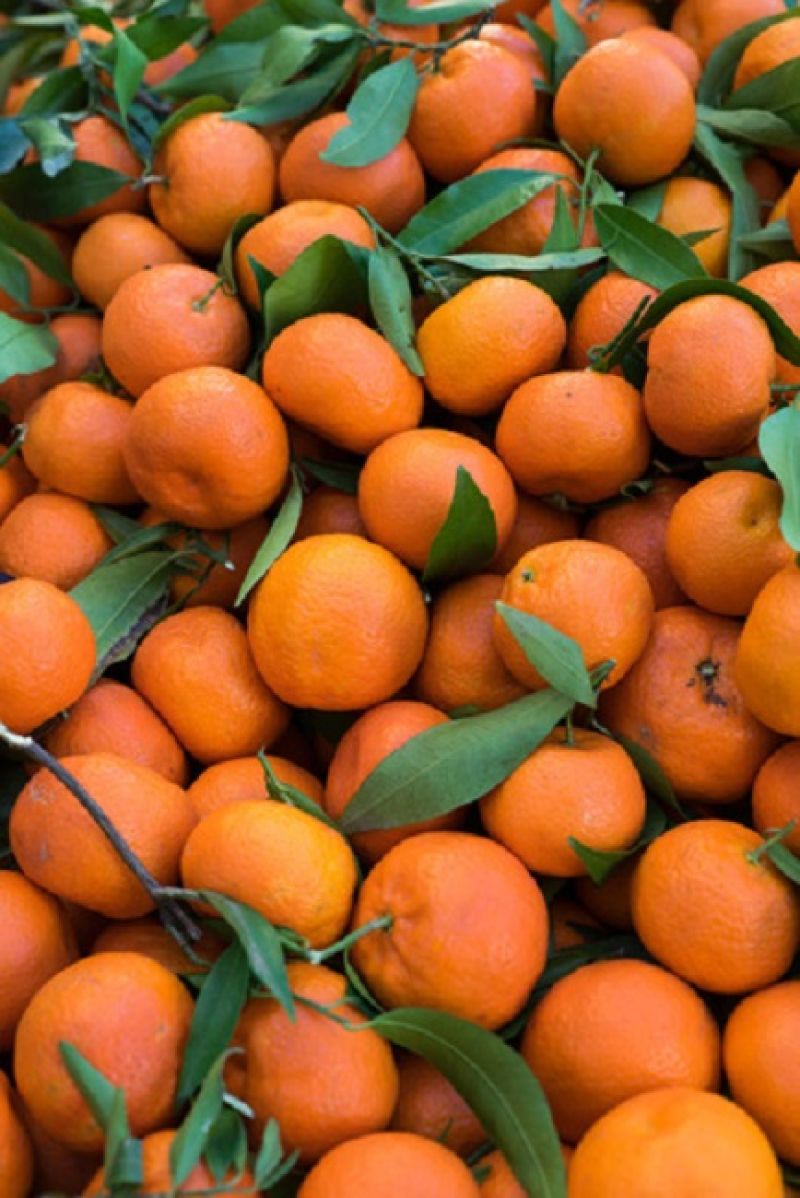5 unmissable things in winter in Corsica
Discover our winter activities, mainly oriented around nature and the best it has to offer us, like those little food gems that can be found only in this period. We get back to our community meals around the fire where we tell the latest news, with the gentle sound of a guitar in the back.
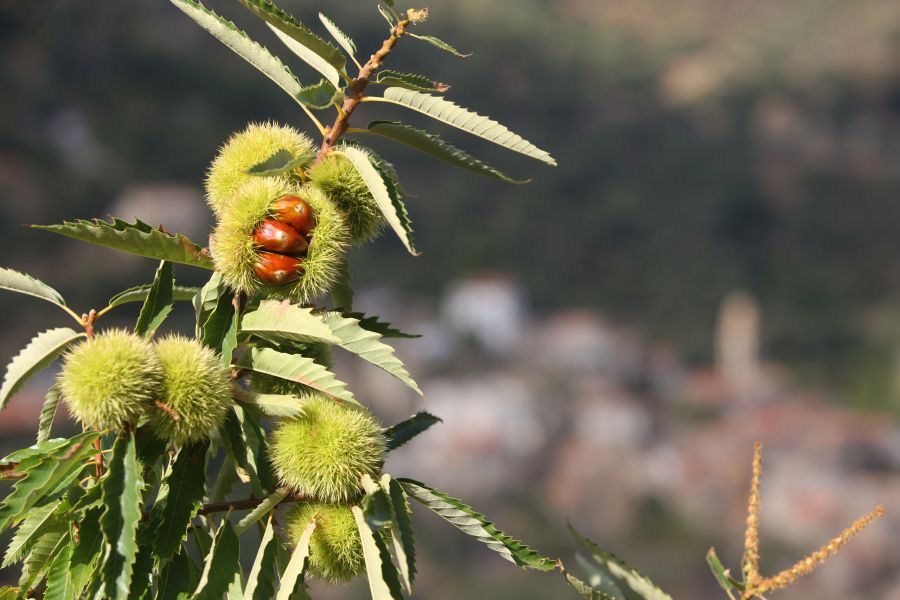
L'oursinade
A highly expected period in the life of the coastal islanders ! Of course, we are talking about the opening of the "zini" sea urchin fishing, which revives the pleasures of meeting, with family or friends, on the beach and in the sun to share a moment of gastronomic relaxation.
Very regulated in order to protect the species, the fishing is authorized between December 15 and April 15 (dates vary) and their diameter must be at least 50mm, quills excluded. The so-called "chestnut of the seas" or "sea hedgehog", the sea urchins are the true stars of winter.
How to prepare them ?
As soon as you get out of the water, open them with a pair of scissors or a guillotine style machine. The edible part is the coral also called "gonads", they are 5 in number, yellow to orange for females and red for males, which are in fact the genital glands of the animal, particularly full in cold water, thus in winter, and when the sea is calm. Do not pick the black ones.
How to eat it ?
They are eaten raw on a slice of bread (some will add butter, pepper or a drizzle of olive oil) accompanied by a glass of dry white wine like Vermentinu (careful, alcohol abuse is dangerous for health). For the most patient, we recover the coral to make omelettes or pasta. A real iodine delight at your fingertips !
For "recreational" fishermen (without scuba tanks), the quantity is limited to 3 dozen. For professionals, the law allows 500 dozen a week, which is used to feed restaurants, local markets and Christmas markets. The quota is revised each year in order to avoid overfishing and the difficulty of reproduction of the species as in northern Corsica and in certain french regions. The maritime police increases controls and fines can be heavy for the violators, until 22.500 €. A solution is held in the premises of the University of Corsica in partnership with the CNRS (French research centre), on the request of professionals worried about growing deserts. With tank farms subsequently released, the programmed disappearance is in the process of being resolved, with human intervention.
So for all these reasons (and many others), thank you for not crushing them this summer on the rocks !
The figatellu
Figatellu (pronounced "figadéllou") is one of the emblematic products of Corsican gastronomy, following an ancient manufacturing process.
What is it ?
This is a kind of bent sausage tied in twine, made from selected parts of insular pork such as lean, fat and especially the liver to which the offal is sometimes added. The percentage of liver in the recipe differs from one Corsican region to another, from one producer to another, each with its own secret recipe. The word figatellu comes from the Corsican "fegatu" which indeed means liver, the main ingredient. They blend the meat with salt and pepper, sometimes herbs (some of them are very local), wine and garlic. All chopped and threaded into fine pork casings. The smoky taste is obtained during the period of wood fire drying. Being made quickly after the slaughter of pigs during what we call the "tumbera", and because it does not require a long storage (unlike other pieces such as coppa or lonzu) figatellu is traditionally a common share after a hard work.
Authentic and farm production takes place from December to the end of April. Figatelli (plural) found in supermarkets or market stalls in summer come from industrialized production to meet the demand of tourism. In 2018, a study found that 90% of the production, from pork (all processed meats) was imported from French Brittany, Spain, Germany and even the Netherlands. We have already heard that Corsican figatelli came from Romanian and Chinese pigs.
How to taste it ?
A classic is grilled to heart on the fiery embers of a fire and consumed with a piece of fresh brocciu and a little pulenta (polenta with chestnut flour). It is also our ally of "spuntinu" (picnic) crushed in a piece of country bread, making sure not to lose a drop of the precious juice and its special taste by pressing it against the crumb.
Slow cooked with lentils, ideal when it replaces the sausage. And by extension on the pizza, in quiche with wild leeks, with potatoes cooked in the fireplace ... A must for winter evenings !
Warning : The figatellu must be consumed cooked to heart, and not dry as simple sausage as often read. Pork meat, if not cooked can cause cases of inflammation of the liver and develop hepatitis.
The chestnuts
An integral part of the Corsican cultural and culinary heritage
Ancient nomadic shepherds, Corsican gradually settled down under the impetus of the Genoese who incited them to plant and maintain chestnut trees. It indeed provides firewood, fruit, and therefore flour for bread and serve as a preponderant food for pigs. In the sixteenth century, Corsica requires all landowners and farmers to plant each year 4 trees: a fig, an olive, a mulberry and a chestnut tree. Pascal Paoli did not need more, centuries later to declare "As long as we will have chestnut trees, we will have bread". It was the main food in time of hunger for the rural populations, especially in Castagniccia "the chestnut grove", a magnificent micro region to visit in any season. After several years of disinterest, the 90s saw a new boom for the product with the rehabilitation of orchards, that often come today as an addition to the pig or cattle cultivation.
However, since 2010, the market is affected and (world) production weakened by a disease from Asia, the cynipus, an insect that feeds on trees, exposing them to diseases and drought. The INRA (National Institute for Agronomic Research) and the GRPTCMC (Regional Group of Producers and Transformers of Chestnuts and Chestnuts in Corsica) are working on possible biological remedies to safeguard productions with the Torymus sinensis, a wasp (also originally from China) that would attack the larvae of the offending pest.
How to pick them up ?
The chestnuts are harvested as early as mid-October. Locate a forest (public or state) of chestnut, group a team, take a backpack and a stick (or will be found onsite). Ready ? Let's go. Under the chestnut trees, use the stick to stir the leaves and find the light brown spiky envelopes in which the chestnuts grow. A little rolling under the sole is usually enough to clear the fruit of the envelope.
ow to eat them ?
They are eaten boiled or in jam, but in Corsica our favorite cooking is at the fireplace. Slightly cut the fruit (to make the heat circulate) and throw them into a skillet with holes, gently stir above the fire for about twenty minutes. Careful it's hot, remove the crispy skin and enjoy the light-yellow fruit. It is rich in fiber, magnesium, iron and vitamin C! A nice day to spend with family or friends and ends at the fireplace to eat chestnuts.
Tasted in its own, it is also found in a multitude of products such as the incomparable chestnut flour, AOC since 2006 and AOP since 2010 (increasingly rare and therefore expensive). We also find the Pietra beer with chestnut flour, jams and of course all that Evisa (above Porto) has to offer: The Maroon Fair (mid-November) aims to promote the products of the industry with a high point around its variety "Insitina". A date not to be missed for all of us !
The hunt
Trellis clothing, SUV, Corsican dense bush, mountains and people with a character often considered as wild... The hunting activity is inseparable from Corsica.
The Corsican hunters have preserved the tradition of sharing and conviviality by bringing together all generations around a good table.
1 in 5 Corsican is a hunter
Nearly 18,000 licensed on the island, representing 4% of the population (versus 2% in mainland France). Male activity par excellence, in community or alone with his dog, hunting is another real activity of winter, expected by all generations. Previously, it was about family feeding, through the sale and / or bartering of cash, which played an economic and social role in helping the family or neighborhood. Today, it is more a mix of social and cultural gathering that we find in the hunt activity, which are held mostly in Corsican language. The hunt as we know it keeps its prestige by ensuring the durability of an ancient world where solidarity and sharing reigns. At the end of the hunt, the members meet to cut up the animals and share a meal by telling their exploits to the youngest, the hunt being accessible from 16 years old and upon the issue of a permit following a theoretical and physical test.
What prey ? When ?
The opening and closing dates are governed by the Prefect and vary by region and year. For example, the wild boar hunt, which holds the box office represents more than 70% of the hunt and is open from August 15 until the end of February for the season 2018 / 2019. Simply roasted in the oven or slow cooking in stew or civet, it is an inseparable dish of the traditional Corsican cuisine, which is also found in all restaurants on the island. Hare, duck and partridge are the other huntable species. For migratory birds, the pigeon, the woodcock, the thrush and the blackbird also have their hunting season. Note that hunting is regulated to be a mainly diurnal activity (depending on the species), prohibited in Corsica on Tuesdays and Fridays (except holidays) and that these days differ depending on the country.
Corsica protects the mountain goats "i muvrini", emblems of freedom and our mountains. As well as the deer that has recently been reintroduced into the Corsican Regional Natural Park from Sardinia.
Never without my Cursinu
The alchemy between the hunter and his dog is paramount and dates back to more than 8000 years BC. The conscientious and passionate breeders are generally limited to one or two dog breeds, which have proven their abilities in the field. Hunting dogs include reporters, stop dogs, breeders, blood dogs or currents. In the latter category, Corsica has the preponderance of the Cursinu breed, which will tend to pursue the game by barking in order to signal to its master its direction. This breed of sheepdog, recognizable by its fawn-like dress, has been present on the island since the 16th century. It accompanied the flocks and had the role of keeping the house. On the orders of his master with whom he has a very faithful relationship, he runs the game. Its versatility, sometimes protective, sometimes independent but especially hunter, makes it an endearing and inseparable breed of hunting in Corsica. The Cursinu Club (formerly the Association for the Protection of the Corsican Dog) is redoubling its efforts today when the numbers of the breed were declining in the mid-twentieth century and there are about twenty breeders throughout Corsica, whose price of purebred litters fly away. With this handful of enthusiasts, the breed still has beautiful hunting days in front of her.
Clementine and citron
The fruit of winter, round, orange, thin and shiny skin, seedless, the recognizable scented smell, and with a Protected Geographical Indication (PGI since 2007), the Corsican clementine unquestionably marks the arrival of winter. Long fresh green leaves, a juicy fruit and "a little green ass" are its main features, made possible by the exceptional climatic conditions: a temperate climate and an ideal rainfall and humidity.
By the way, where does the Clementine come from ?
This is a natural cross between tangerine and orange and is named after Brother Clément, who was watching the children enjoying this fruit back ib Algeria, whom matured well before mandarin. In Corsica, its production is mainly in the eastern side of the island, by the sea with 130 producers, for nearly 500,000 plants and a production of 17 to 20,000 tons each year. It is harvested by hand when it has reached maturity on the tree and therefore has not been chemically treated. For the "Nustrale" side, it is sold with one or two leaves attached (watch out ! since our Spanish neighbors understood the passion for our delicious clementines, their products also have a couple of leaves connected but do not have the same treatment and therefore not the same taste). So, if you find ours on the stalls of your market, know that it is kept at room temperature, remember: it is Corsican and does not like the cold !
In winter, it is also the period of lemons, oranges, kumquats and cedrats or “citron” ("alimea" in Corsican, a kind of body-builded lemon). Just about the right time to fill our bodies up with vitamin C ! Mainly, these citrus fruits are eaten during the winter months or made into jam for the summer trade. Citron is found candied. More and more, recognized chefs use this exceptional fruit and allies it to any kind of accompaniment of culinary dishes and pastries.
Now you know that winter is synonymous with sharing and conviviality, and especially good meals from a wild but generous nature, you may want to consider coming late summer or earlier in the season. And of course, other activities are to be counted like skiing or hiking.
